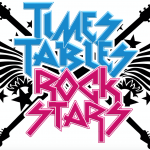Mathematics Curriculum Information
Rationale
At Woodcroft, we follow the Maths programme of study outlined in the Mathematics programmes of study: key stages 1 and 2, supported within the framework provided by White Rose. The aim of our curriculum is to ensure all pupils:
- become fluent in the fundamentals of mathematics, including through varied and frequent practice with increasingly complex problems over time, so that pupils develop conceptual understanding and the ability to recall and apply knowledge rapidly and accurately.
- reason mathematically by following a line of enquiry, conjecturing relationships and generalisations, and developing an argument, justification or proof using mathematical language.
- can solve problems by applying their mathematics to a variety of routine and nonroutine problems with increasing sophistication, including breaking down problems into a series of simpler steps and persevering in seeking solutions.
Curriculum Progression
Schemes of learning paired with resources are mapped out for each year group on White Rose.
Curriculum Maps are mapped out in ‘pathways’ from EYFS to Year 6. Additionally, there are pathways that explore threshold concepts such as ‘money’ and ‘fractions’.
Assessment and Monitoring
- Assessment are carried out after each unit and can operate as an Proof of Progress ‘POP’ task to judge the depth of learning achieved by each pupil (an example can be found here).
- Summative termly assessments for arithmetic and reasoning are carried out at the end of term for Year 1 – Year 6.
- Weekly arithmetic tests are available to consolidate fluency skills using the ‘Rising Stars’ Arithmetic tests.
- Using the above data teachers make milestone BAD (Basic, Advancing, Deep) judgements
- The monitoring cycle consists of lesson observations, pupil interviews and supportive professional discussions.
Champion Apps at Woodcroft
We use lost of apps to support learning at Woodcroft. Three of the main apps that we currently use are Eedi, Prodigy, Khan Academy, Times Tables Rock Stars and Busy Things. These can be accessed at home using the Apps button from this website when pupils are logged in to their school account.
A Typical Maths Lesson at Woodcroft
- Warm-up: Game or engaging activity
Purpose: energise pupils, revise previous skills, reinforce basic operation operations e.g. times tables every day.
Examples: Quick-fire times tables, True or False, ‘I See Reasoning’ slides, ’Whoops!’ (model an error), count in 7s ping pong with your partner
- Contextualise the Learning sequence: ‘Yesterday we… today we will’
Purpose: Put the present lesson in the wider context. Pupils should refer to prior knowledge and difficulties of the week.
Example: ‘Yesterday we x by 10, today we are going to use this skill to x by 100 and 1000’
- Main Teaching: Scaffolded the skill – ‘Watch me, let’s try together, now try independently’
Purpose: Slowly remove support so the pupils feel comfortable with the new skill.
Example:
1.’Watch me..’ (Model the expert Maths voice as you demonstrate the skill)
- ‘Let’s try another example together’ – continue to check understanding and ask questions
- ‘Is this correct?’ – Model a common error
- ‘Now you try independently’ – identify some focus pupils in this time who hold misconceptions’
- Model today’s practice of the skill (that directly follows the main teaching) and share success criteria
Purpose: Ensure pupils are confident to start the activity. Pupils should be able to explain the success criteria back to you/a partner.
Examples:
- ‘If I were tackling Question 1, this is how I would present it in my book’
- ‘Pupil 1, pupil 2 and pupil 3, let’s try another one together with your whiteboards’
- Independent work: Activities that increase in challenge (fluency practice to applied problem solving)
Advice:
- Allow pupils time to tackle the work without the teacher voice
- Check pupil working and make a note of any common misconceptions
- Deliver whole class intervention feedback about common misconceptions and mistakes.
- Direct support to any groups/pupils requiring the re-modelling of skills.
- Reflect and correct
Purpose: Reflect on lesson, gain immediate feedback
Examples: Call out answers and mark, self-mark with calculator, make corrections in purple, give out a further challenge (e.g. a reasoning problem), address a common error, self-evaluate in book, peer feedback
Visit a curriculum subject page by clicking the link listed below:
English Mathematics Science Computing Physical Education Music History Geography Spanish Design and Technology Art and Design Religious Education





